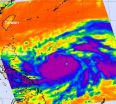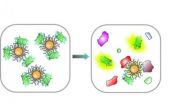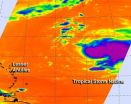The report, commissioned by the Healthcare Quality Improvement Partnership and carried out by the Paediatric Intensive Care Audit Network (PICANet) showed that death rates in children's intensive care units are low and continue to fall. However, there continues to be a higher risk of mortality for children of south Asian origin observed in earlier years.
This national audit also found that only 5 children's intensive care units across Britain and Ireland were staffed with the number of qualified nurses recommended by the Paediatric Intensive Care Society.
Professor Elizabeth Draper, co-principal investigator of PICANet from the University of Leicester, commented: "There has been a decline in the number of children's intensive care units meeting the level of nurse staffing specified by their professional body. However, this is set against a low overall mortality rate and evidence that all institutions endeavour to provide the best quality facilities and information for parent and carers."
PICANet collected data from 31 institutions providing paediatric intensive care. They looked at details of over 55,000 admissions to these units of nearly 39,000 individual children aged between 0 and 15 years over a three year period from 2009 to 2011. This included where each child was admitted, their diagnosis and the treatment they received, how long they remained in intensive care and the eventual outcome.
The report showed that the death rate in paediatric intensive care units is continuing to fall, dropping from 4.2% in 2009 to 3.9% in 2011. However, a repeat analysis of more recent data from admissions in England and Wales between 2008 and 2011 showed that risk-adjusted mortality for children of south Asian origin was 40% higher than for other children admitted to paediatric intensive care, a slight increase since the first analysis was published in 2007. The death rate in English and Welsh paediatric intensive care units was 6.3% for south Asian children vs.4.0% in the rest of the children during this later period.
"Most children leave paediatric intensive care alive," said Dr Roger Parslow, a senior lecturer at the University of Leeds and co-principal investigator of PICANet. "However, we have repeated some earlier work on children of south Asian origin and it would appear that they still have a higher risk of dying in paediatric intensive care than other children. Our data do not explain why and we are keen to investigate this in more detail."
A snap-shot survey of staffing levels across the institutions also highlighted the mismatch between standards set by the Paediatric Intensive Care Society and the situation on the ground. Only 15% of institutions met the recommended ratio of nursing staff to children's intensive care beds, despite overall staffing levels remaining the same.
###The ninth annual report from PICANet on activity and outcome in paediatric intensive care services throughout the UK and Ireland is available to download free from here: www.picanet.org.uk.
For more information:
Contact: Paula Gould, University of Leeds Communications & Press Office: Tel 0113 343 8059, email p.a.gould@leeds.ac.uk
Contact: Ather Mirza, University of Leicester Press Office: Tel 0116 252 3335, email: pressoffice@le.ac.uk
Notes to Editors:
1. PICANet has been collecting data on all admissions to paediatric intensive care in England and Wales from 2002 and has expanded to include Scotland, Northern Ireland and Southern Ireland. It currently holds data on over 150,000 admissions. The information held on the PICANet database has been used by the Department of Health, strategic health authorities, commissioners, clinical audit teams, researchers and individual institutions to improve the delivery of paediatric intensive care.
2. Risk-adjustment of mortality takes into account how sick children are when admitted to a paediatric intensive care unit to allow comparisons between different units or different groups of patients. In this case, PICANet have used risk-adjustment to take into account how many south Asian and non-south Asian children would be expected to die based on their severity of illness at admission.
3. PICANet is funded by the National Clinical Audit and Patient Outcomes Programme via the Healthcare Quality Improvement Partnership (HQIP), Health Commission Wales Specialised Services, NHS Lothian / National Service Division NHS Scotland, the Royal Belfast Hospital for Sick Children, Our Lady's Children's Hospital, Crumlin, Children's University Hospital, Temple Street and The Harley Street Clinic, London.
4. HQIP: The Healthcare Quality Improvement Partnership (HQIP) is led by a consortium of the Academy of Medical Royal Colleges, the Royal College of Nursing and National Voices. Its aim is to promote quality improvement, and in particular to increase the impact that clinical audit has on healthcare quality in England and Wales. HQIP hosts the contract to manage and develop the National Clinical Audit and Patient Outcomes Programme (NCAPOP). Their purpose is to engage clinicians across England and Wales in systematic evaluation of their clinical practice against standards and to support and encourage improvement in the quality of treatment and care. The programme comprises more than 30 clinical audits that cover care provided to people with a wide range of medical, surgical and mental health conditions.
5. One of the UK's largest medical, health and bioscience research bases, the University of Leeds delivers world leading research in medical engineering, cancer, cardiovascular studies, epidemiology, molecular genetics, musculoskeletal medicine, dentistry, psychology and applied health. Treatments and initiatives developed in Leeds are transforming the lives of people worldwide with conditions such as diabetes, HIV, tuberculosis and malaria. www.leeds.ac.uk
6. The University of Leicester is a member of the 1994 Group of universities that shares a commitment to research excellence, high quality teaching and an outstanding student experience. 'Elite Without Being Elitist'
Times Higher Awards Winner 2007, 2008, 2009, 2010
Follow us on Twitter http://twitter.com/uniofleicsnews
This is Leicester: http://www2.le.ac.uk/about/facts



